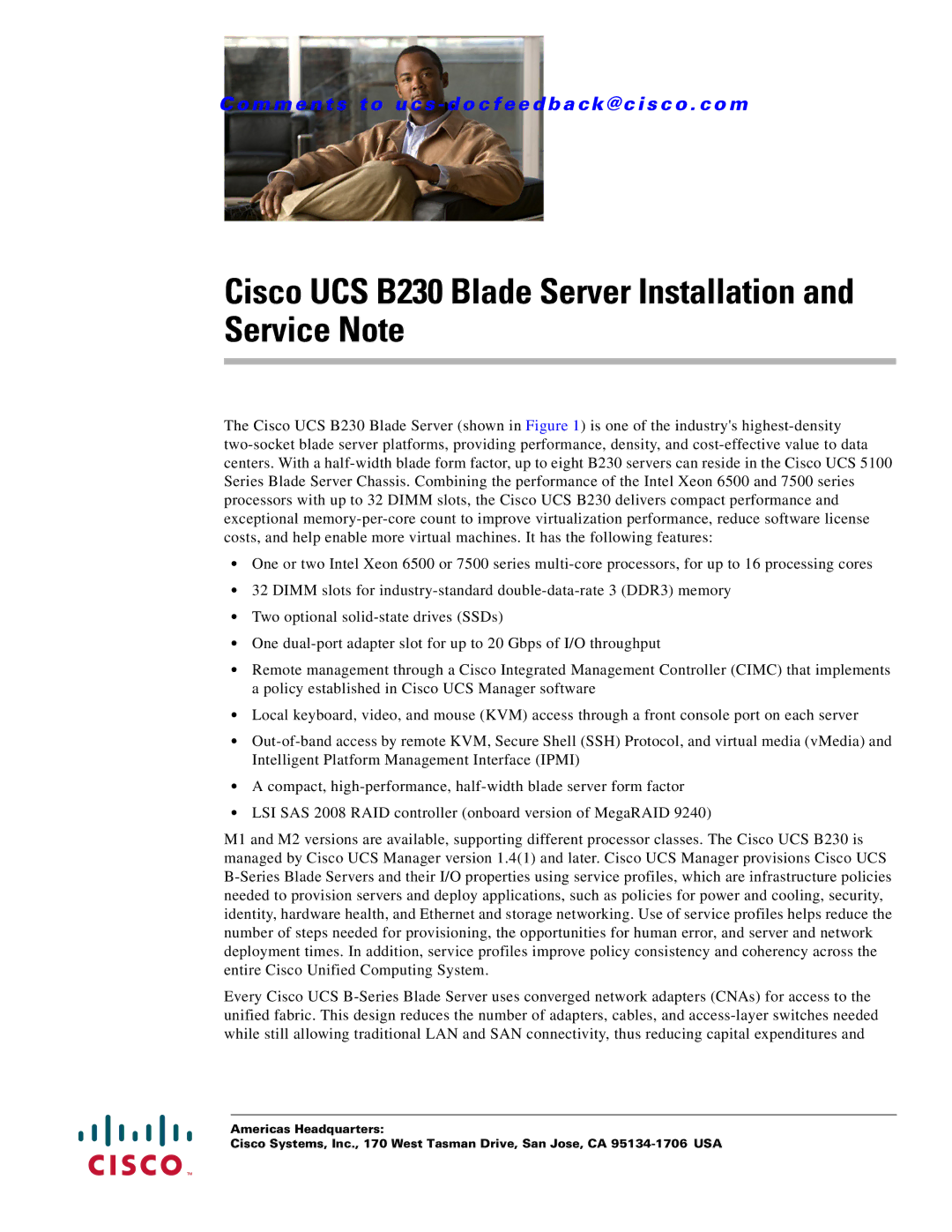C o m m e n t s t o u c s - d o c f e e d b a ck @ c i s c o . c o m
Cisco UCS B230 Blade Server Installation and Service Note
The Cisco UCS B230 Blade Server (shown in Figure 1) is one of the industry's highest-density two-socket blade server platforms, providing performance, density, and cost-effective value to data centers. With a half-width blade form factor, up to eight B230 servers can reside in the Cisco UCS 5100 Series Blade Server Chassis. Combining the performance of the Intel Xeon 6500 and 7500 series processors with up to 32 DIMM slots, the Cisco UCS B230 delivers compact performance and exceptional memory-per-core count to improve virtualization performance, reduce software license costs, and help enable more virtual machines. It has the following features:
•One or two Intel Xeon 6500 or 7500 series multi-core processors, for up to 16 processing cores
•32 DIMM slots for industry-standard double-data-rate 3 (DDR3) memory
•Two optional solid-state drives (SSDs)
•One dual-port adapter slot for up to 20 Gbps of I/O throughput
•Remote management through a Cisco Integrated Management Controller (CIMC) that implements a policy established in Cisco UCS Manager software
•Local keyboard, video, and mouse (KVM) access through a front console port on each server
•Out-of-band access by remote KVM, Secure Shell (SSH) Protocol, and virtual media (vMedia) and Intelligent Platform Management Interface (IPMI)
•A compact, high-performance, half-width blade server form factor
•LSI SAS 2008 RAID controller (onboard version of MegaRAID 9240)
M1 and M2 versions are available, supporting different processor classes. The Cisco UCS B230 is managed by Cisco UCS Manager version 1.4(1) and later. Cisco UCS Manager provisions Cisco UCS B-Series Blade Servers and their I/O properties using service profiles, which are infrastructure policies needed to provision servers and deploy applications, such as policies for power and cooling, security, identity, hardware health, and Ethernet and storage networking. Use of service profiles helps reduce the number of steps needed for provisioning, the opportunities for human error, and server and network deployment times. In addition, service profiles improve policy consistency and coherency across the entire Cisco Unified Computing System.
Every Cisco UCS B-Series Blade Server uses converged network adapters (CNAs) for access to the unified fabric. This design reduces the number of adapters, cables, and access-layer switches needed while still allowing traditional LAN and SAN connectivity, thus reducing capital expenditures and
Americas Headquarters:
Cisco Systems, Inc., 170 West Tasman Drive, San Jose, CA 95134-1706 USA

